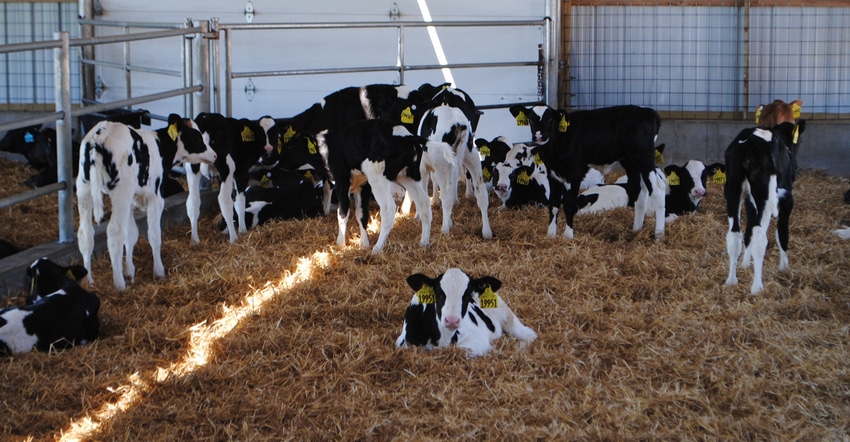November 15, 2021

Within the dairy industry, there are numerous terms, or buzzwords, we often hear. Some of these terms are here and gone, while others are here to stay. Animal well-being is a term that is present in many things we see and read. The definition of animal well-being can be synonymous with animal welfare, and it means the well-being of non-human animals.
What does this really mean for those involved within the dairy industry? This article takes a closer look at what animal well-being encompasses for dairy cattle and how it can benefit the dairy producer.
Animal care
Formal standards of animal well-being vary among groups, but USDA’s National Institute of Food and Agriculture’s goal in addressing animal well-being is to help producers provide America with abundant, safe, nutritious and affordable food-animal products, produced in ways that respect animals and the environment. As a dairy producer, it is essential to provide a safe and nutritious product to the consumer, whether it is in the form of milk or meat. Milk and meat plants have standards a producer must meet to ensure quality of the products, but how can aspects of animal well-being help achieve these standards?
The National Dairy FARM (Farmers Assuring Responsible Management) Program is a great tool to assist in achieving these standards. The FARM Program looks at animal care, environmental stewardship, antibiotic stewardship, biosecurity, and safe, exceptional work environments.
Animal well-being practices are different for the various stages of life. When thinking about pre-weaned calves, we pay close attention to colostrum management, volume of milk and starter offered, fresh water access, and age and pain mitigation for disbudding. It also involves making sure we have adequate facilities or housing for these calves and how they are transported from their birthplace to the growing facility.
As these heifers grow, make sure they still have adequate access to feed, water and shelter. We should be concerned about heat and cold stress with all ages of animals. At some point these animals also leave our farms, and we need to consider if they are fit for transportation. When animals are sick and medications are given, provide employees with a treatment record book to write down what was given to ensure proper withdrawal times for meat and milk.
Work closely with your veterinarian to create a herd health plan for your farm. The plan should also cover how to handle non-ambulatory animals and euthanasia. Make sure you share the plan with your farm team, which can include employees, family members or close industry representatives. Also make sure they know how to follow the guidelines you create. All these practices encompassing animal well-being ensure a safe and delicious product for the consumer, along with confidence for the producer that he or she is doing the best possible with their dairy animals.
Feb. 22 meeting planned
The University of Wisconsin-Madison Division of Extension is hosting a Dairy and Beef Well-Being Conference on Feb. 22 at the Wisconsin Farm Discovery Center in Manitowoc. Topics are disbudding, dry cow ventilation, FARM 4.0 Program updates, fitness for transport, maternity cow management and genetic selection. Specialists from UW-Madison and UW-River Falls, along with industry representatives, will be speaking at the one-day conference.
Please visit the Division of Extension Dairy Topic Hub for more information and to register. This conference is a great opportunity for continuing education for you and your employees.
For more information about the dairy industry, visit the Division of Extension Dairy Topic Hub, or contact your local Extension office.
Olson is the Extension ag educator in Vernon County, Wis.
You May Also Like




